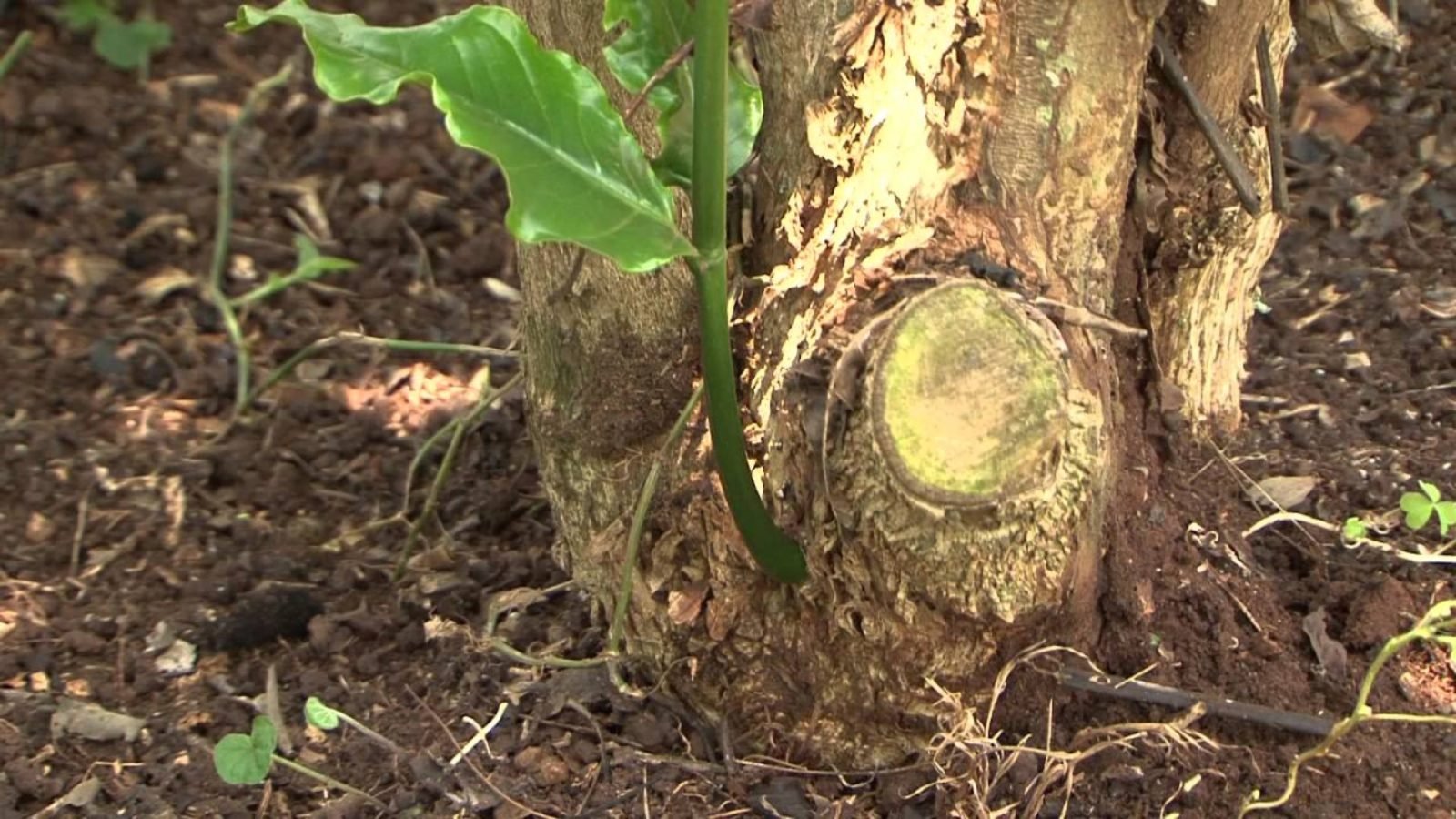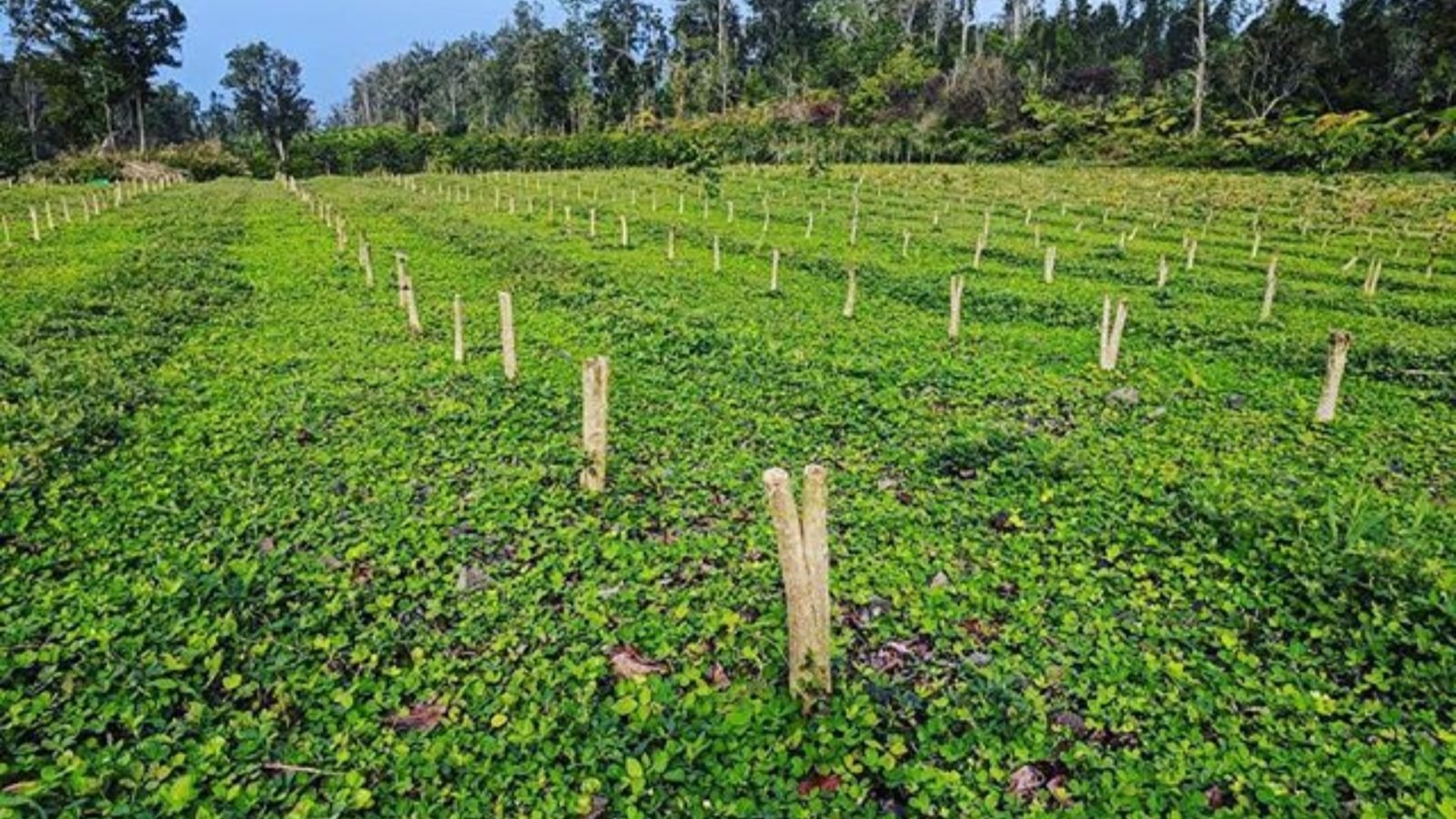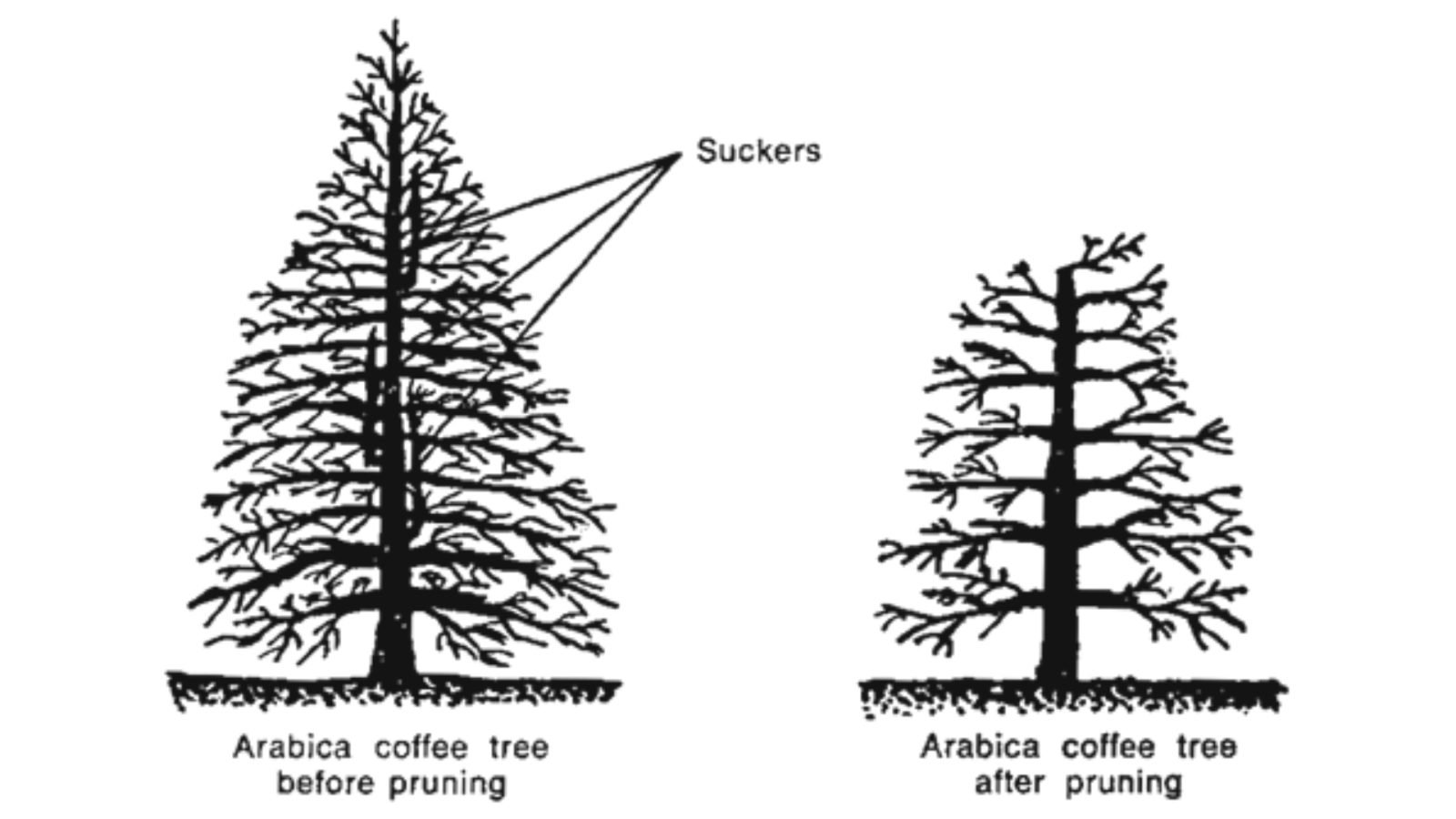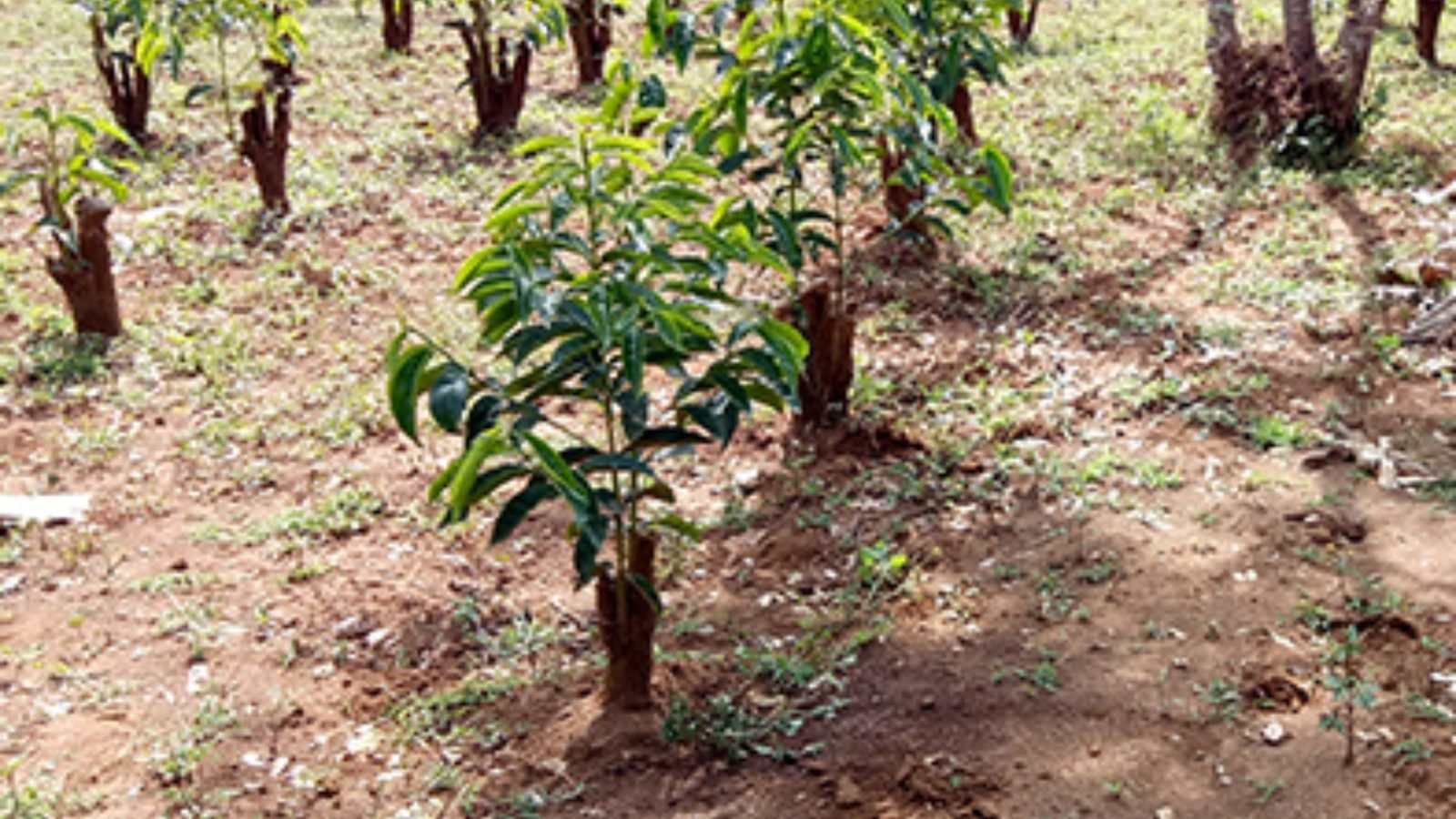Pruning VS Stumping: Why Coffee Farmers Use Different Methods

Coffee trees require regular maintenance, such as pruning and stumping. Regular maintenance is important for tall plants to keep the trees healthy and the yields abundant. Do you know the differences between pruning and stumping and why farmers adopt one or another?
Table of Contents
The Importance of Pruning and Stumping for Coffee Trees

Coffee trees are pruned to increase productivity and make harvesting fruits easier. When coffee trees grow tall and bushy, the air and light cannot reach all parts of the plants. It will prevent all the branches and leaves from getting enough energy to produce fruits and flowers. The problem gets exacerbated when coffee trees grow older and bushier.
Diseases, molds, and pests are major risks for coffee trees that are not pruned or stumped. Without maintenance, parts of the trees will become moist and deprived of light, a perfect breeding ground for pests.
Finally, pruning and stumping help extend coffee plants’ production as they age. The combination of natural depletion, aging, and phytosanitary problems may affect the yield, but pruning and stumping keep your coffee plants productive a little longer.
Also Read: From Trees to Your Cup: 3 Types of Coffee Processing Methods
Techniques of Pruning and Stumping
Before learning about the differences between pruning and stumping, remember that coffee-producing regions worldwide may use different techniques. Various factors determine the decision to pick a technique, such as the production age, varieties, plantation density, environmental conditions, and risk factors of diseases and pests.
Pruning

Pruning means cutting some of the unnecessary branches until the coffee plants reach the desired size and shape. This method reduces the plant’s thickness, allowing air and light to reach all parts and removing the diseased or damaged branches.
There are three types of pruning performed on coffee plants. They are:
1. Topping
Topping occurs when the coffee plants are about two years old or younger and continues as regular maintenance. The goal is to keep them from getting too tall or growing overly thick stems.
2. Bending Pruning
Bending pruning is done on plants younger than four years old but experiencing diseases. The plant is bent at a 45-degree angle and tied to a stake before being pruned close to the ground. This method encourages the growth of new, healthy sprouts.
3. High Pruning
High pruning is a method applied to coffee trees that already experience a decline in their yields (compared to the previous years). However, this is only performed on coffee trees still in productive years.
Another pruning method is pinching, which is usually done after stumping. When you see new sprouts growing from the cleared stems, check to pick the ones that grow most vigorously. Pick four or five best sprouts, and remove the others. A month afterward, pick the best two or three sprouts and repeat the removal process. This way, the main sprouts will be supported by the remnants of the secondary ones, which you had removed.
Also Read: Exploring the Regions Where Coffee Beans Grow Best
Stumping

If pruning is a form of regular maintenance, stumping is an aggressive method performed on old or heavily infested trees.
With stumping, farmers cut the stems around 20 to 30 cm above the ground, stripping the stems off the branches. This method is used to encourage the regenerative period. If the stumping is done correctly, farmers can wait for two years before the stumped trees start producing flowers and fruits again.
Depending on the tree’s condition and height, farmers sometimes leave a few stems. However, any stumping method must include careful cutting, ensuring that the remaining trees still have the nutrients they need to grow.
To achieve the best stumping method without depleting the trees of nutrients, farmers must make a clean, oblique cut without leaving any cavity. Ensure all the stumping tools are sharp so each cut will be clean. If the trees are infected, burn all the diseased branches after stumping them and disinfect them carefully.
When is the Right Time for Pruning and Stumping?
Farmers must schedule pruning and stumping at different times depending on when they planted the trees. However, the ideal time for the actual pruning and stumping is after harvest, during cold weather.
The trees will not grow sprout by pruning/stumping during this time. Since farmers will not harvest anything that grows from the trees during this time, there will be no risks of diseases or fungal infections.
Conclusion
In the end, there are no identical methods when scheduling pruning and stumping methods. Different plantations and coffee plants may require specific schedules based on their cultivations, plant types and ages, and the producers’ goals. Coffee producers must create long-term maintenance plans tailored to their plants. This way, the plants are healthy, and the yields are abundant.
High-quality coffee producers understand the differences between pruning and stumping and work to create long-term plans for these maintenance plans. You can see the result by ordering coffee beans from FnB.co.id, a coffee exporter based in Indonesia. Working with the best coffee producers, FnB offers only the most prestigious beans, the results of excellent cultivation and maintenance.











